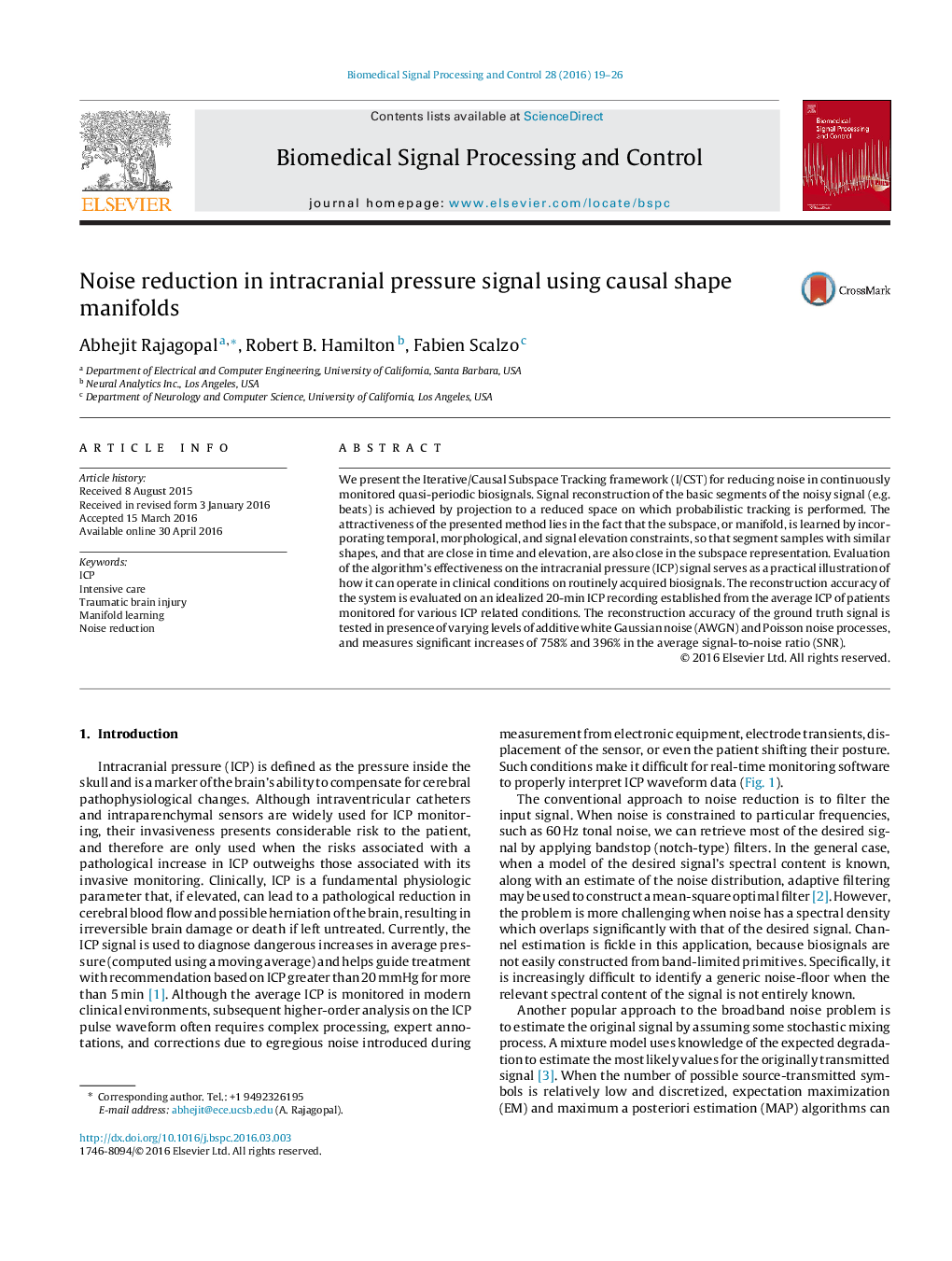| Article ID | Journal | Published Year | Pages | File Type |
|---|---|---|---|---|
| 558707 | Biomedical Signal Processing and Control | 2016 | 8 Pages |
•A probabilistic denoising framework for quasi-periodic biosignals is introduced.•The framework relies on a manifold generated from exemplary signal pulses.•Noisy pulses are projected onto the manifold in a beat-by-beat fashion.•Regression algorithms are used to track the progression of pulses on the manifold.•A denoised estimate is made in the input space by defining an inverse mapping.
We present the Iterative/Causal Subspace Tracking framework (I/CST) for reducing noise in continuously monitored quasi-periodic biosignals. Signal reconstruction of the basic segments of the noisy signal (e.g. beats) is achieved by projection to a reduced space on which probabilistic tracking is performed. The attractiveness of the presented method lies in the fact that the subspace, or manifold, is learned by incorporating temporal, morphological, and signal elevation constraints, so that segment samples with similar shapes, and that are close in time and elevation, are also close in the subspace representation. Evaluation of the algorithm's effectiveness on the intracranial pressure (ICP) signal serves as a practical illustration of how it can operate in clinical conditions on routinely acquired biosignals. The reconstruction accuracy of the system is evaluated on an idealized 20-min ICP recording established from the average ICP of patients monitored for various ICP related conditions. The reconstruction accuracy of the ground truth signal is tested in presence of varying levels of additive white Gaussian noise (AWGN) and Poisson noise processes, and measures significant increases of 758% and 396% in the average signal-to-noise ratio (SNR).
Graphical abstractFigure optionsDownload full-size imageDownload as PowerPoint slide
